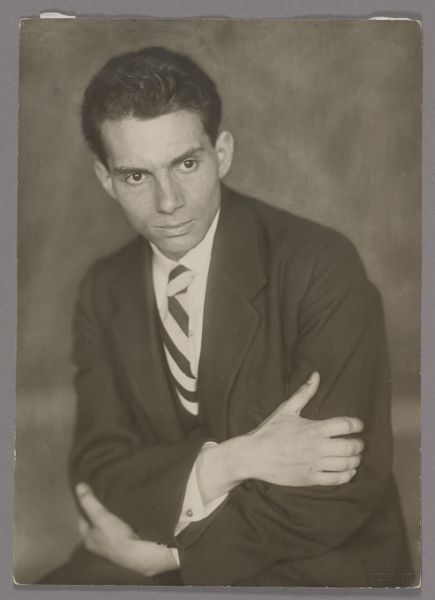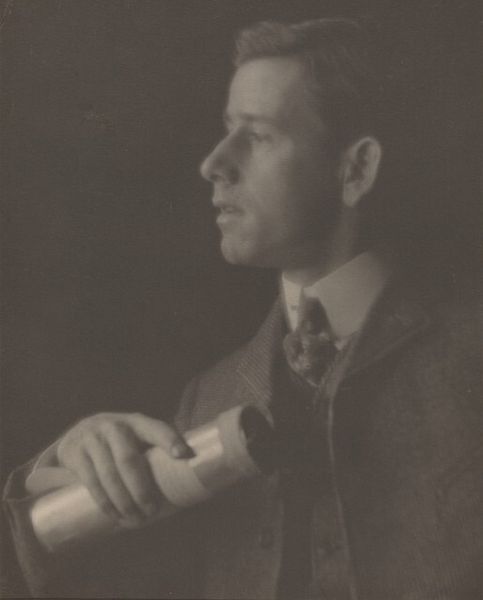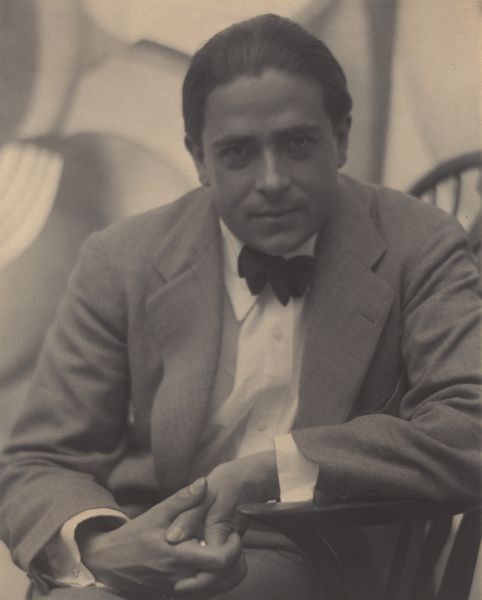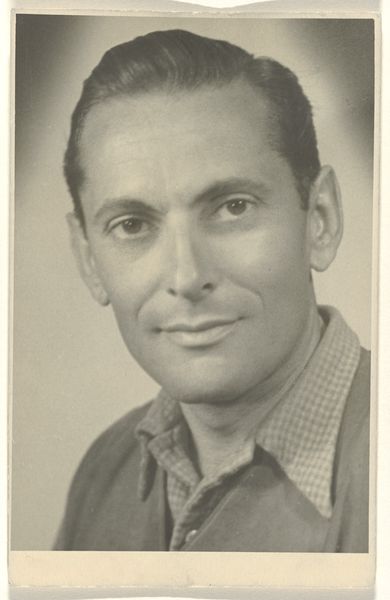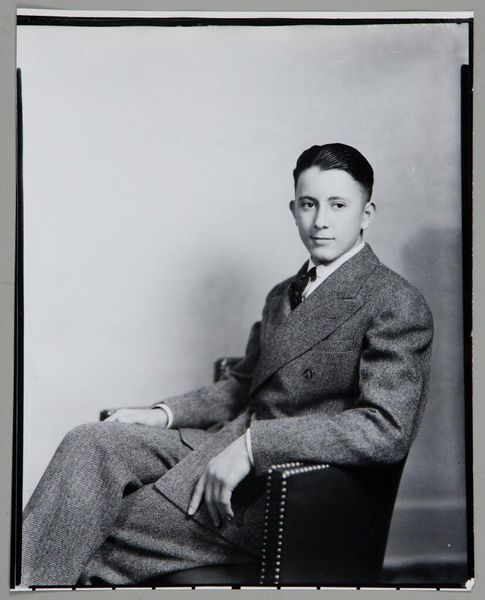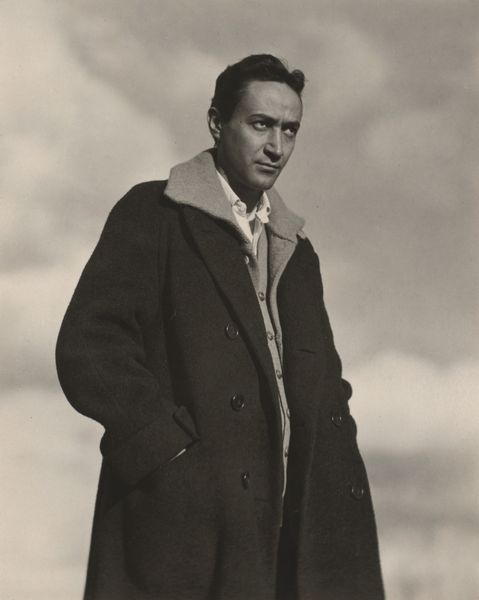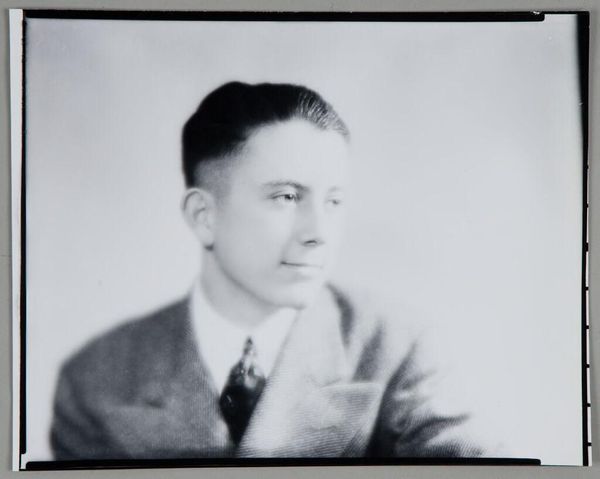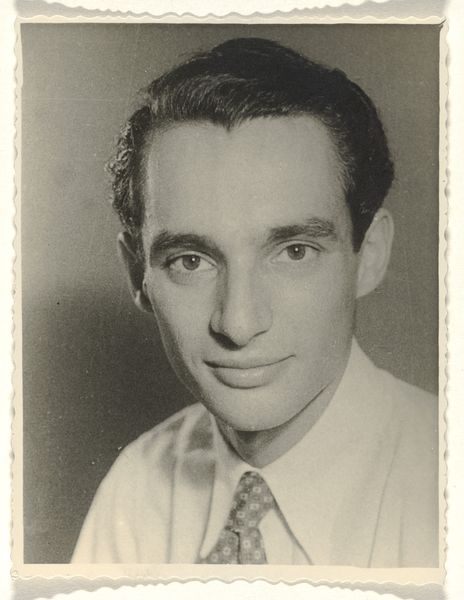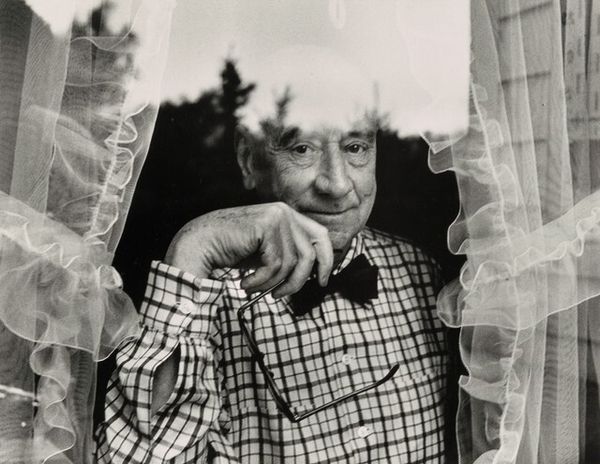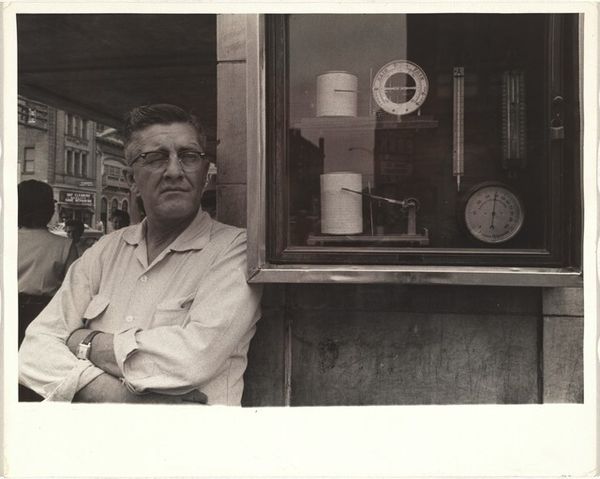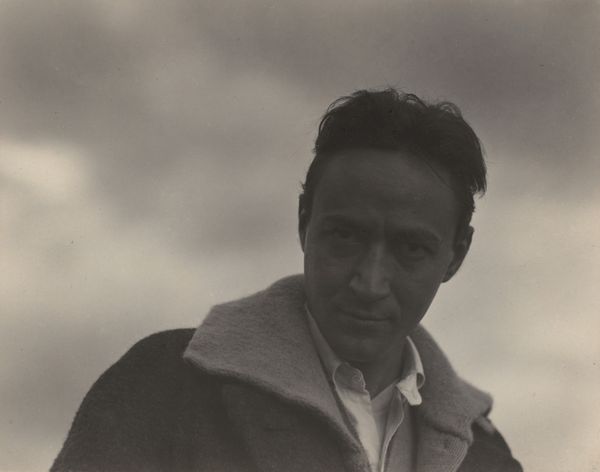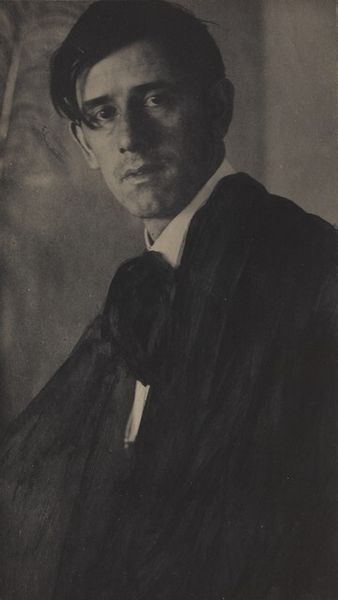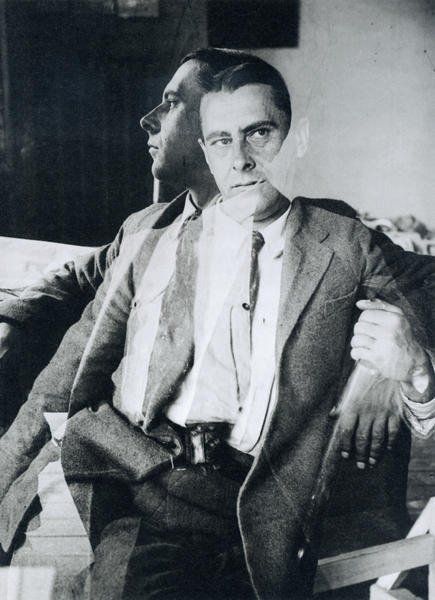
photography, gelatin-silver-print
#
portrait
#
black and white photography
#
black and white format
#
street-photography
#
photography
#
historical photography
#
black and white
#
gelatin-silver-print
#
monochrome photography
#
modernism
#
realism
Dimensions: image: 19.05 × 13.02 cm (7 1/2 × 5 1/8 in.) sheet: 35.56 × 27.95 cm (14 × 11 in.)
Copyright: National Gallery of Art: CC0 1.0
Curator: Let’s discuss Walker Evans’ "New York," a gelatin silver print realized sometime after 1940. It captures the artist in what seems to be an intimate moment, revealing a softer side not always seen in his more detached, documentary work. Editor: My initial impression is one of quiet contemplation. The muted tones contribute to this feeling, as does the figure's gentle expression. The overall composition is simple, almost stark. Curator: The image is particularly interesting when we consider Evans' position within the social and political landscape of the time. As an artist known for documenting the effects of the Great Depression, here we see a more personal reflection, perhaps on his own role as an observer within this period. The image offers a glimpse into the intersectional identities of both artist and subject. Editor: I find the hat incredibly symbolic. It feels like a conscious attempt to create an identity, a chosen archetype, the common man perhaps, rather than documenting pure, raw experience. And then there are the suspenders: these details create this everyman visual rhetoric and evoke cultural memory associated with the era and its struggles. Curator: Yet, is it not possible that the ‘everyman’ persona is still performative, shaped by societal expectations? Even in intimate settings, the gaze, whether self-imposed or anticipated, is influential in how identity is represented. I am inclined to read it less as pure cultural continuity but instead as an active negotiation of personal versus public identities at that moment in time. Editor: Possibly so. It could be both intentional and circumstantial, echoing his surroundings and time in the most visually succinct way. Even his direct gaze suggests a type of self-awareness, as if he were attuned to both past cultural tropes and their evolution in popular contemporary imagination. Curator: A final consideration is the way the black-and-white medium transforms this moment, lending to the enduring qualities. Perhaps its continuous accessibility opens doors to ever shifting contemporary values, especially today, inviting dialogue with social politics and their representation in the art historical narratives. Editor: The interplay between light and shadow truly enriches our understanding of symbolism at work. Thanks to the artist’s insightful visual grammar, cultural memory perseveres.
Comments
No comments
Be the first to comment and join the conversation on the ultimate creative platform.
